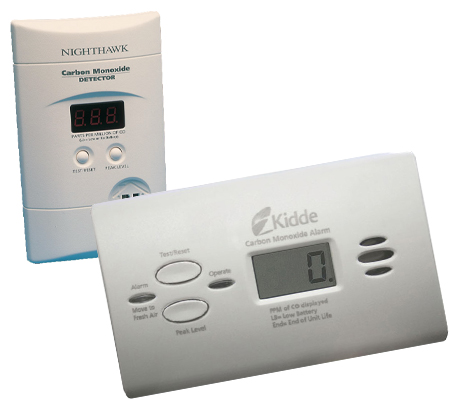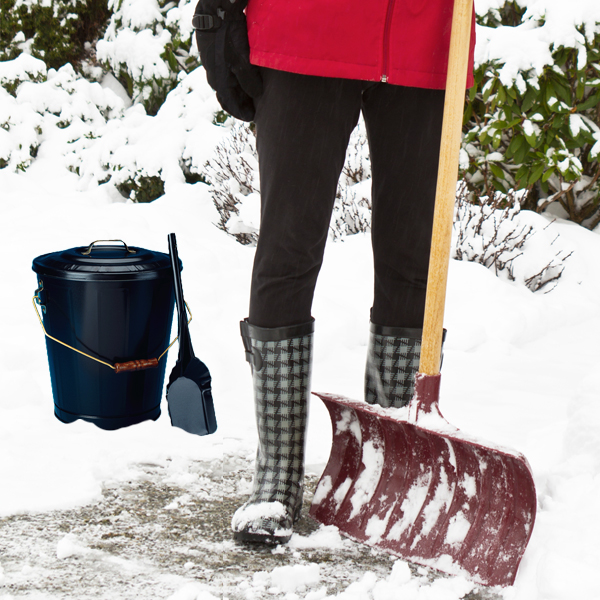by Tom
Share
by Tom
Share

See why your chimney needs inspected before you strike a match and light the first fireplace fire of the season. Learn how your fireplace, a focal point for warm, happy family gatherings, can, without care, pose deadly hazards.
The two most serious hazards are chimney fires and carbon monoxide poisoning. All you have to do to beat these two hazards is to keep your chimney clean and free of obstructions.
#One Reason Your Chimney Needs Inspected before You Light the First Fire of the Season: Chimney Fires
Chimney fires start when creosote deposited on the inside of the chimney flue catches fire. All types of wood produce creosote when they burn. Creosote build-up is minimized when fires burn hot with a good draft. It’s worst when wet, uncured wood burns at a low temperature with lots of steam. Softwoods don’t necessarily produce more creosote than hardwoods. The important factor is the temperature of the fire.
Chimney fires sometimes smolder for several days, out of sight and out of mind until they penetrate to the wooden structure of the home, causing a house fire. Or, chimney fires can create a super draft up the chimney producing a roar like a jet plane.
Here’s how to prevent a chimney fire:
- Have your chimney inspected annually, in the fall, before you light your first fire. A licensed, insured chimney sweep can remove virtually all of the creosote that has built up. Chimney sweeps do much more than inspect and clean your flue. They are trained to care for the total health of your fireplace and chimney including leaky flues, unsealed connections, and mortar deterioration. But avoid chimney sweep scams.
- During the winter season while you are using the fireplace, inspect the chimney about monthly yourself. Use a flashlight to look for creosote deposits above the firebox and, if possible, down the flue from the roof.
- Creosote can look sooty, bumpy, or shiny. Using a screwdriver, scrape off a bit of the creosote so you can estimate its thickness. If the deposit is 1/8” thick it poses a distinct hazard and must be cleaned. If it’s ¼” thick, you should not use the fireplace until it has been cleaned. Shiny or glazed creosote must be professionally removed.
# Two Reason Your Chimney Needs Inspected before You Light the First Fire of the Season: Carbon Monoxide Poisoning
Anything that burns produces carbon monoxide, and odorless gas that is potentially deadly. People who breathe carbon monoxide can become unconscious and die. Fireplaces can send carbon monoxide into the room if there is an obstruction, like a raccoon nest for example, inside the chimney. Carbon monoxide can also come from a fireplace with a poor draft. If your fireplace sends smoke into the room instead of up through the chimney, carbon monoxide is present.
Here’s how to prevent carbon monoxide poisoning:
- Install a plugin or battery powered carbon monoxide detector. If it requires a battery, replace it twice a year, when the time changes to and from Daylight Savings Time.

- Inspect the inside of your chimney. The best way is to have someone shine a flashlight up the chimney while you look down the chimney. If you see anything that obstructs the chimney, it must be removed before you use the fireplace.
- If your fire is not burning briskly, especially if any smoke is coming out into the room, open a window.
So play it safe: Have your chimney inspected and cleaned if needed, and install a carbon monoxide detector before you light the first fire of the season.

Chimney Inspections Prevent Chimney Fires and CO Poisoning
tweet
5 Ways to Prevent Chimney Leaks A leaking pipe, a leaking roof, a leaking window, a leaking chimney – none of them is good. Here are 5 ways make your chimney leak-proof and prevent chimney leaks. See how to fix chimney leaks and prevent them in, through and around your chimney. #1 Way to Prevent Chimney Leaks: Install a […]
When is a headache, nausea, and fatigue not “just the flu” and, instead, carbon monoxide poisoning? And how can you prevent carbon monoxide poisoning in your home? Every year 20,000 Americans are treated in emergency rooms for carbon monoxide poisoning. But many of those at first thought they were dealing with a run-of-the-mill bug. Those […]
Will fireplace ashes melt ice or just improve traction on ice? Are there advantages or disadvantages to using ashes instead of rock salt or other chemicals on snow and ice? What are the pros and cons of other de-icers compared with using fireplace ashes on icy surfaces? Will Fireplace Ashes Melt Ice and Snow? Fireplace ashes primarily provide […]
Nothing can completely prevent a Christmas tree or fireplace greenery from burning. But you can reduce the flammability of your Christmas trees and mantel greenery with these homemade or purchased fire retardants. Fire retardants prevent fires from starting and spreading, reduce or eliminate harmful smoke, and minimize fire damage. Some are made specifically for Christmas trees and […]




